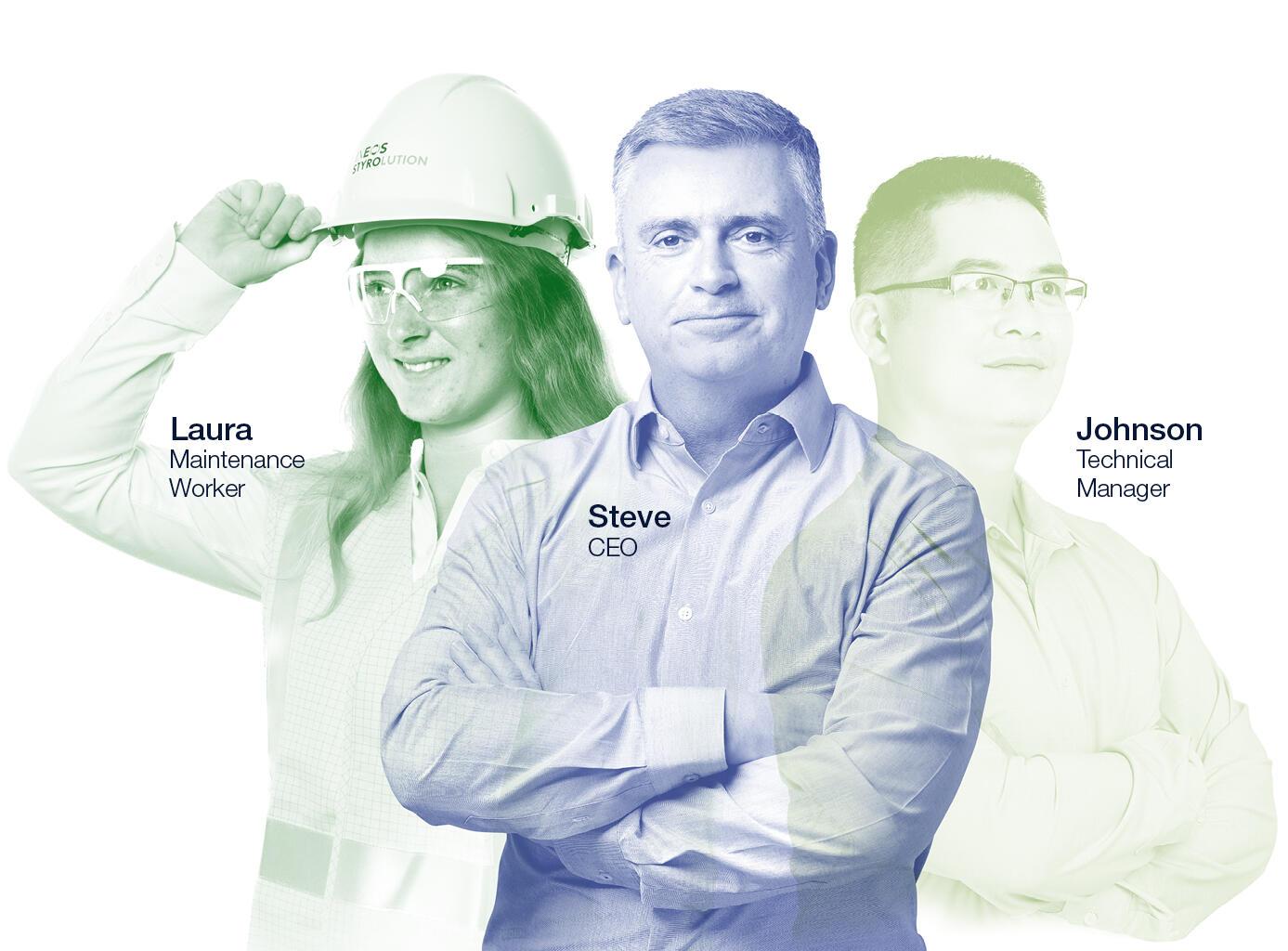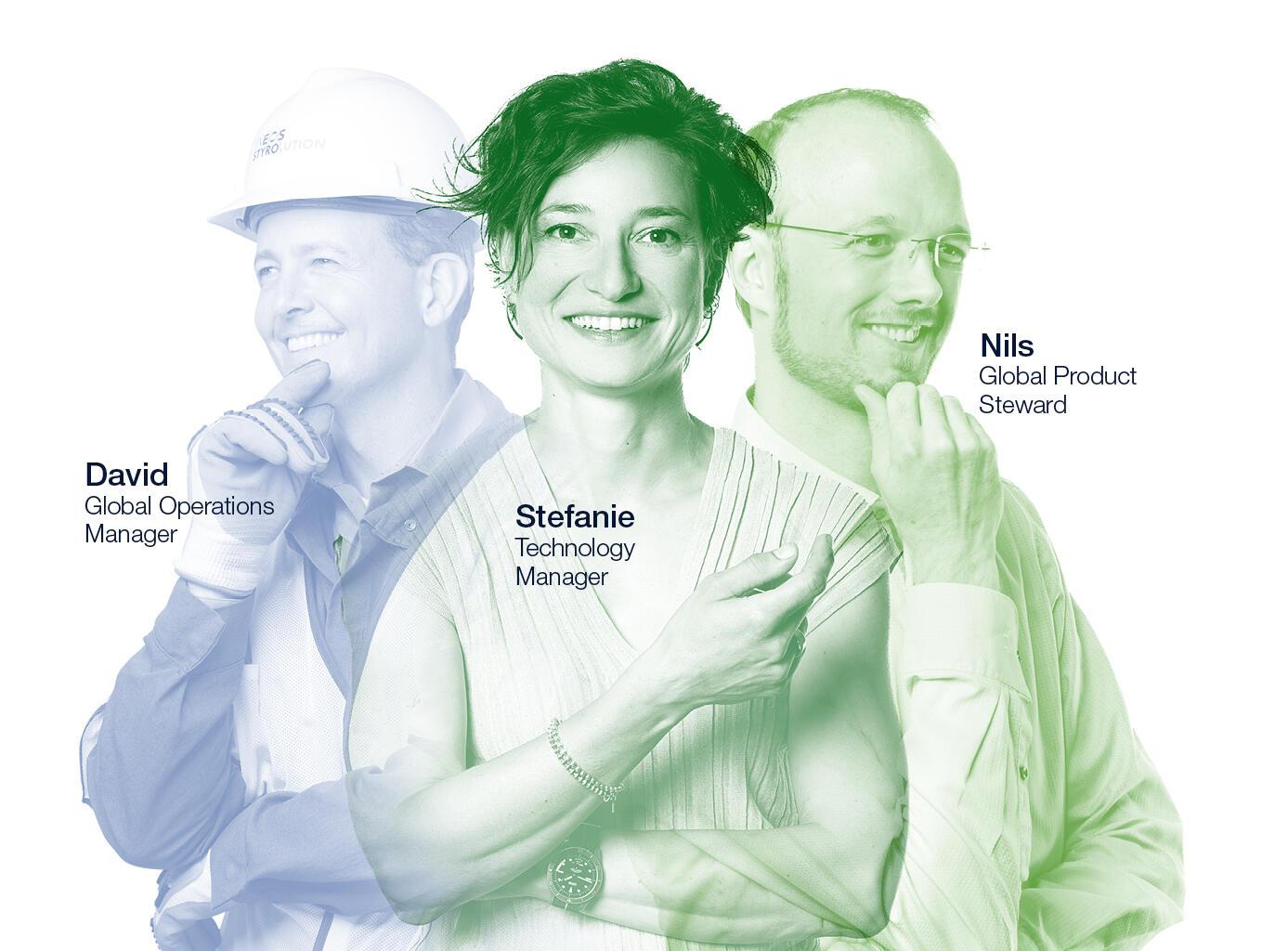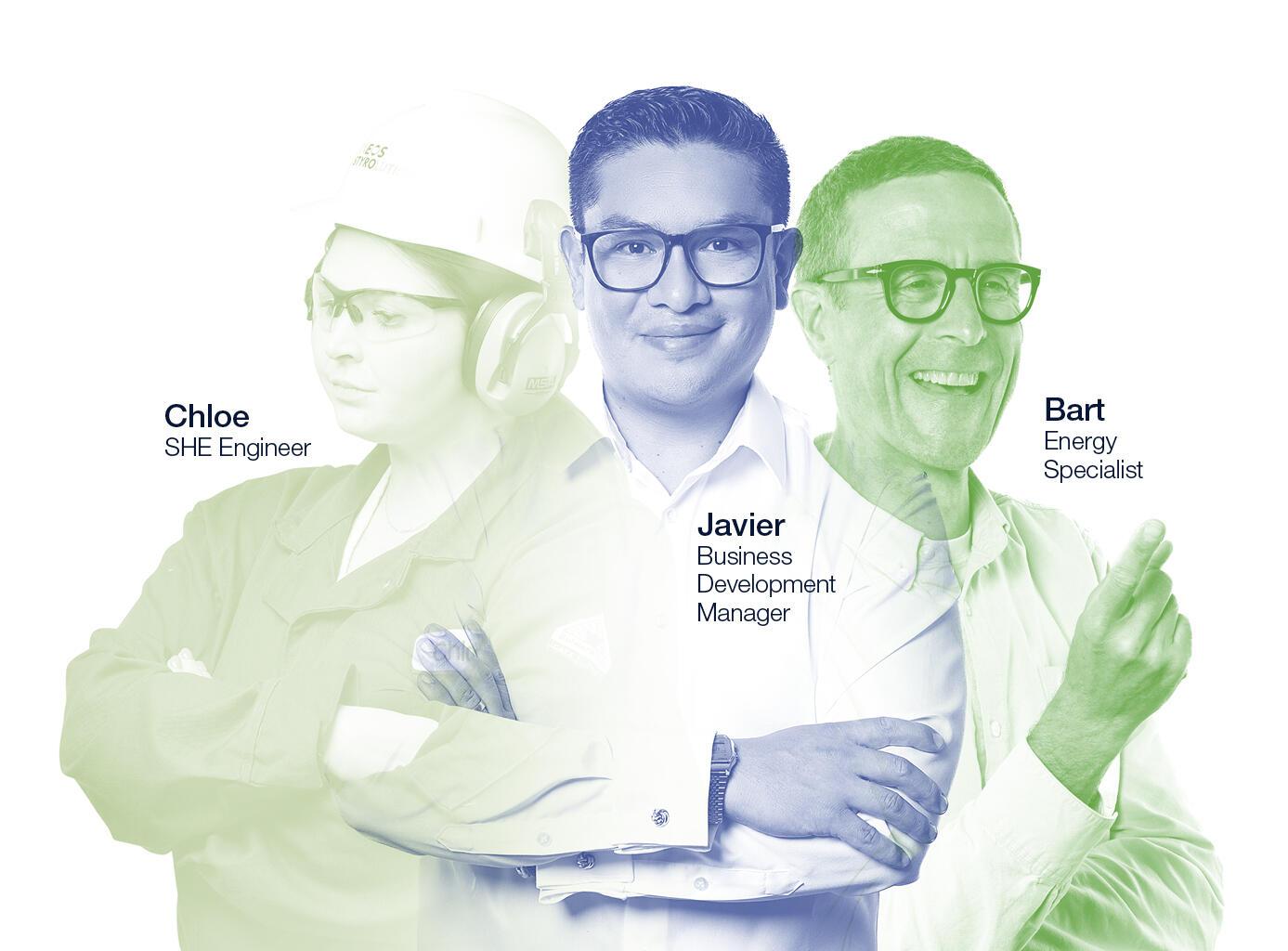How we plan to make it happen
We’ve already made significant strides in our pursuit of these goals.
RECYCLING UP. WASTE DOWN.
First, we are enhancing our ECO portfolio, providing customers with drop-in solutions that require no additional technology or investment. This allows for seamless integration into existing machinery and processing equipment.
Our unique advantage is our ability to apply every major recycling technology to our styrenics products, especially polystyrene (PS). This strength underpins our commitment to reducing waste and advancing recycling practices. Our recycling efforts are structured into different loops, leveraging technologies such as mechanical recycling, depolymerisation, pyrolysis, and gasification.
Our roadmap for reducing carbon emissions revolves around four strategic clusters. We are transitioning from fossil-based feedstock to more circular and renewable materials. This includes implementing recycling technologies for our polystyrene and ABS products, enabling us to significantly cut emissions, reduce waste, and extend the life cycle of valuable materials.
Pathways to circularity for sytrenics

INNOVATION UP. CARBON EMISSIONS DOWN.
Our path to a low-carbon future

Another crucial cluster involves fuel switching. We aim to reduce approximately one-third of our scope 1 and scope 2 CO2 emissions by 2030 through the adoption of green energy. Additionally, process optimisations and site investments will help increase energy efficiency and curb carbon emissions.
This trajectory positions us to achieve a significant milestone of 1 million tonnes of CO2 reduction by 2030, accounting for 45% of our total GHG emissions. However, our journey towards net-zero emissions by 2050 demands continuous exploration of further reduction measures.
Looking ahead, we are exploring future options such as carbon capture, storage, and utilisation, ensuring a comprehensive approach to achieving our net-zero emissions target by 2050.
PRODUCT SAFETY UP. WORRIES DOWN.
Styrenics are safe. This fact applies to our conventional products as well as our ECO products. We will continue to ensure the performance quality and safety of our entire portfolio because we are extremely diligent about verifying every new feedstock – be it recycled or renewable. We are also investing in our production and process capabilities and have taken significant steps to comply with all regulatory requirements.
100% regulatory compliance – ECO products as safe as conventional sytrenics






